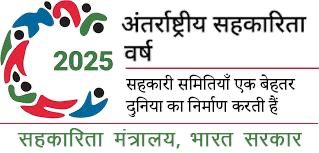The Samagra Shiksha scheme is an integrated scheme for school education covering the entire gamut from pre-school to class XII. The scheme treats school education as a continuum and is in accordance with Sustainable Development Goal for Education (SDG-4). The scheme not only provides support for the implementation of the Right of Children to Free and Compulsory Education Act, 2009 but has also been aligned with the recommendations of National Education Policy (NEP) 2020. The scheme aims to ensure that all children have access to quality education with an equitable and inclusive classroom environment which should take care of their diverse background, multilingual needs, different academic abilities and make them active participants in the learning process. The scheme has been extended for a period of five years i.e., from 2021-22 to 2025-26.
The Goal SDG-4.1 states that “By 2030, ensure that all boys and girls complete free, equitable and quality primary and secondary education leading to relevant and effective learning outcomes".
Further the SDG 4.5 states that “By 2030, eliminate gender disparities in education and ensure equal access to all levels of Education and vocational training for the vulnerable, including persons with disabilities, indigenous peoples and children in vulnerable situations”
Vision:
To ensure that all children have access to quality education in an equitable and inclusive classroom environment which takes care of their diverse background, multilingual needs, different academic abilities and make them active participants in the learning process.
Objectives:
- Implementing the recommendation of NEP 2020;
- Supporting States & UTs in implementing RTE Act, 2009;
- Focus on Early Childhood Care and Education;
- Emphasis on Foundational Literacy and Numeracy;
- Thrust on Holistic, Integrated, Inclusive and activity based Curriculum and Pedagogy;
- Provision of quality education and enhancing learning outcomes of students;
- Bridging Social and Gender Gaps in School Education;
- Ensuring equity and inclusion at all levels of school education;
- Strengthening and up-gradation of SCERTs/SIE and DIETs;
- Ensuring safe, secure and conducive learning environment and minimum standards in schooling provisions;
- Promoting vocationalisation of education
Coverage:
The scheme covers 1.16 million schools, over 156 million students and 5.7 million Teachers of Govt. and Aided schools (from pre-primary to senior secondary level) by involving all stakeholders of the school ecosystem i.e. teachers, teacher educators, students, parents, community, school management committees, SCERTs, DIETs, BITEs, Block resource Persons, Cluster resource persons, volunteers for providing quality, inclusive and equitable education.
Samagra Shiksha supports new pedagogical and curricular structure of school education (5+3+3+4):
3 years in Anganwadi/pre-school and 12 years in school

- Foundational stage (5) : multilevel, play/activity-based learning
- Preparatory Stage (3) : play, discovery, and activity-based and interactive classroom learning
- Middle Stage (3) : experiential learning in the sciences, mathematics, arts, social sciences, and humanities
- Secondary Stage (4) : multidisciplinary study, greater critical thinking, flexibility and student choice of subjects
For more details, click here: https://samagra.education.gov.in
 2 minutes, 5 सेकंड
2 minutes, 5 सेकंड



